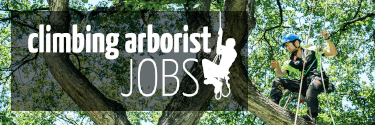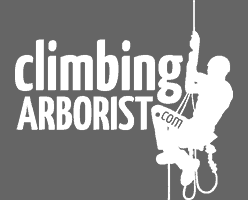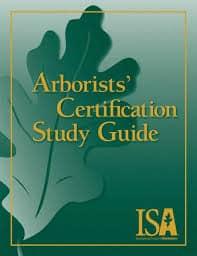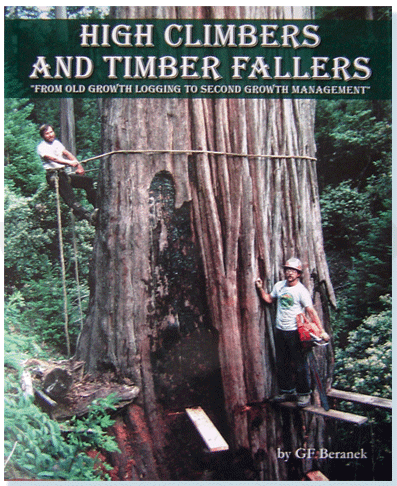We have compiled a list of the best publications for arboriculture, covering all aspects of the industry from climbing, knot tying, tree biology, pest management and more...
The Tree Climber's Companion: A Reference And Training Manual For Professional Tree Climbers by Jeff Jepson
This best selling pocket field guide covers tree climbing techniques, equipment selection & use, and provides instruction on basic methods of entering the tree, working safely, and getting back down. A great guide for beginners who want to get started with the safest and most modern equipment and techniques or old-timers who are looking to learn some new tricks. This guide is one of the best sources for learning about the equipment featured in our catalog and web site. Great for use as a training manual for new recruits. Spanish language version available.
The Tree Climber’s Companion is written by a certified arborist and tree service owner, Jeff Jepson, who is also a two time winner of the All-Around Climbing Champion of the Minnesota Chapter of the ISA. This means that the tree climbing info in the Tree Climber’s Companion comes from first-hand, professional experience. Bryan Kotwica provides the climbing and tree equipment illustrations for the book, and is a professional tree climber in addition to a professional artist. This make the illustrations in the Tree Climber’s Companion top-notch, as they are clear, well-drawn, and come from someone with direct experience of tree climbing techniques and equipment.
An Illustrated Guide to Pruning by Ed Gilman
Well written and easy to understand, An illustrated guide to pruning, Third Edition is a must-have for anyone interested in the pruning and maintenance of trees. Filled with updated illustrations, photographs, and examples, this completely updated guide is designed to help readers understand and implement the appropriate pruning practices that are vital to developing sustainable structure in the first 25 years of a tree's life. Coverage includes a variety of information about the challenges associated with pruning such as disease prevention, root pruning, mature tree pruning, and restoration following storms. With its simple tables, lists, and strategies, this book is an appealing resource for horticulture, landscape and tree associations and industries and is a natural addition for botanic garden and arboreta bookstores.
Arborists' Certification Study Guide by Sharon J Lilly
A complete study guide developed for ISA Arborist Certification candidates. Chapters discuss significant arboriculutral topics with nearly 240 illustrations and photos. This guide provides a comprehensive reference for arborists of all levels. A helpful index, a glossary of arboriculutral terms, and a valuable list of additional resources ensure this study guide's unlimited usefulness as a foundation for all tree care professionals. Each chapter of the guide contains learning objectives, key terms for study, narrative with illustrations and photos, workbook section, challenge questions, sample exam questions, and suggested sources for supplementary information. Chapter topics include: Tree Biology, Tree Identification,Pruning, Tree Support and Protection Systems, Diagnosis and Plant Disorders, Tree Assessment and Risk Management, Climbing and Working in Trees, and more. Softcover, 222 pages, illustrations.
Knots at Work by Jeff Jepson
By Jeff Jepson. Illustrations by Bryan Kotwica. Beaver Tree Publishing, 2014. Presents over 50 arborist knots with information on both knot construction (tying the knots) and application (using the knots). Offering more than 200 illustrations and utilizing a handy cross-reference format, this compact book measures 4.5" x 8" and is ideal for field use. Softcover. 184 Pages.
Tree Climbers' Guide-3rd Edition by Sharon J Lilly
Written specifically for tree climbers, this publication can be used as a basic text for the tree climber, as well as a study guide for the ISA-Certified Tree Worker Program. This guide contains more than 200 color illustrations. Each chapter includes a list of important terms and concludes with a workbook section. This book was written from the perspective of what the climber needs to know in order to climb and perform aerial tree work safely.
Chapters include: Tree Health and Sciences, Safety, Ropes and Knots, Climbing, Pruning, Rigging, Removal, and Cabling. Appendices with answers to the workbook questions, a glossary, and additional references also are included. Spiral-bound, 172 pages, color illustrations.
On Rope by Bruce Smith & Allen Padgett
In the decade since its original publication, On Rope has gained worldwide recognition as the most authoritative book on single rope techniques (SRT). Like its predecessor, this new edition is a practical approach to North American vertical ropework. This book contains 384 pages with over 700 detailed drawings and the new edition has been extensively revised and expanded to include detailed descriptions of other ropes users including: arborists, river rescue, window cleaners, and circus riggers among others. Coverage of European SRT rigging techniques and climbing systems has also been greatly enlarged.
High Climbers and Timber Fallers by Jerry Beranek
Jerry Beranek's book preserves the history of the hardworking folks who made the West what it is today, and chronicles the change from old growth logging to second growth management. Lots of these jobs are incredible and have to be seen to be believed. This book is packed with stories, photos, and history from the last 30 years. A great read, with many full-page (9”x12”) photos.
303 pages, hardcover, color photos.
The Hidden Life of Trees by Peter Wohlleben Tim Flannery
In The Hidden Life of Trees, Peter Wohlleben shares his deep love of woods and forests and explains the amazing processes of life, death, and regeneration he has observed in the woodland and the amazing scientific processes behind the wonders of which we are blissfully unaware. Much like human families, tree parents live together with their children, communicate with them, and support them as they grow, sharing nutrients with those who are sick or struggling and creating an ecosystem that mitigates the impact of extremes of heat and cold for the whole group. As a result of such interactions, trees in a family or community are protected and can live to be very old. In contrast, solitary trees, like street kids, have a tough time of it and in most cases die much earlier than those in a group.
Drawing on groundbreaking new discoveries, Wohlleben presents the science behind the secret and previously unknown life of trees and their communication abilities; he describes how these discoveries have informed his own practices in the forest around him. As he says, a happy forest is a healthy forest, and he believes that eco-friendly practices not only are economically sustainable but also benefit the health of our planet and the mental and physical health of all who live on Earth.
Meetings with Remarkable Trees by Thomas Pakenham
Thomas Pakenham's bestselling book of tree portraits. With this astonishing collection of tree portraits, Thomas Pakenham produced a new kind of tree book. The arrangement owed little to conventional botany. The sixty trees were grouped according to their own strong personalities: Natives, Travellers, Shrines, Fantasies and Survivors. From the ancient native trees, many of which are huge and immeasurably old, to the exotic newcomers from Europe, the East and North America, MEETINGS WITH REMARKABLE TREES captures the history and beauty of these entrancing living structures. Common to all these trees is their power to inspire awe and wonder. This is a lovingly researched book, beautifully illustrated with colour photographs, engravings and maps - a moving testimonial to the Earth's largest and oldest living structures.
















